Hands-On Powerline Networking: How Well (Or Not) Are Latest-Generation Devices Working?
by Brian Dipert on September 1, 2011 12:41 AM EST- Posted in
- Networking
- Powerline Adapters
- NetGear
(Cautious) good news, first; powerline networking technology has matured to an impressive degree from a reliability standpoint, at least with respect to my particular test bed, and across my limited test time. I've actually been running a mix of XAV5001s and four-port-hub-inclusive XAV5004s (in network node positions 2 and 3) since this spring, and they've handled power losses and other hiccups with aplomb, never requiring occasional (or not-so-occasional) manual unplug-and-replug sequences to revive their network connections as was the case with early offerings. The INT6400-based devices that they replaced were equally robust. And Sigma Designs' adapters worked without a hitch, too, at least in the several-day span that I used them.
Maybe it's a nitpick, and maybe under normal operating scenarios it might even be seen as a plus, but at least for testing purposes I wish that the XAV5001's Ethernet LED (the one on the right, with the adapter right-side up) would blink during active data transfers. As for the Powerline LED (the one in the middle), it's sometimes green:
sometimes yellow:
and sometimes red...even when installed in the exact same power plug!
Here's what the XAV5001 user guide says, "The Pick A Plug feature lets you pick the electrical outlet with the strongest link rate, indicated by the color displayed by the LED. Green: Link rate > 80 Mbps (Best). Amber: Link rate > 50 and < 80 Mbps (Better). Red: Link rate < 50 Mbps (Good)." But don't be alarmed (as I initially was) if an adapter's Power LED (the one on the left), normally green, turns amber:
That color change simply signifies that the adapter hasn't seen any network traffic passing through it for a while, and has therefore automatically transitioned into a power savings mode. Trust me, it'll wake up again once you 'ping' it.
The Sigma Designs/Motorola adapters exhibited similar behavior to their Qualcomm/Netgear peers, with the PLC Link LED sometimes green:
and sometimes red:
Again, this occurs even when used with the exact same power outlet plug, at different points in time. My email to Sigma Designs' PR contact requesting an explanation of the difference between 'green' and 'red' went unanswered, but I suspect 'red' also signifies a somehow-degraded powerline connection in this particular case.


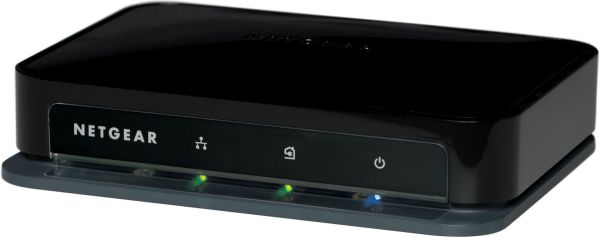
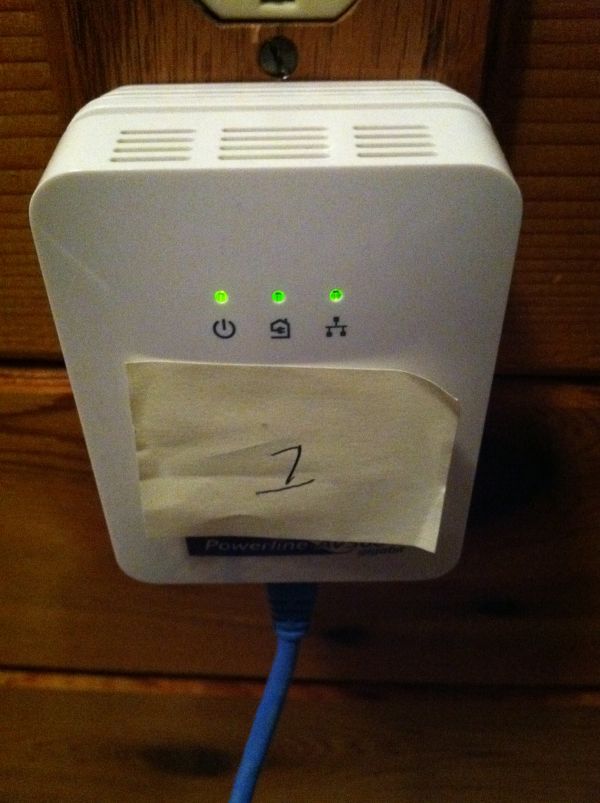

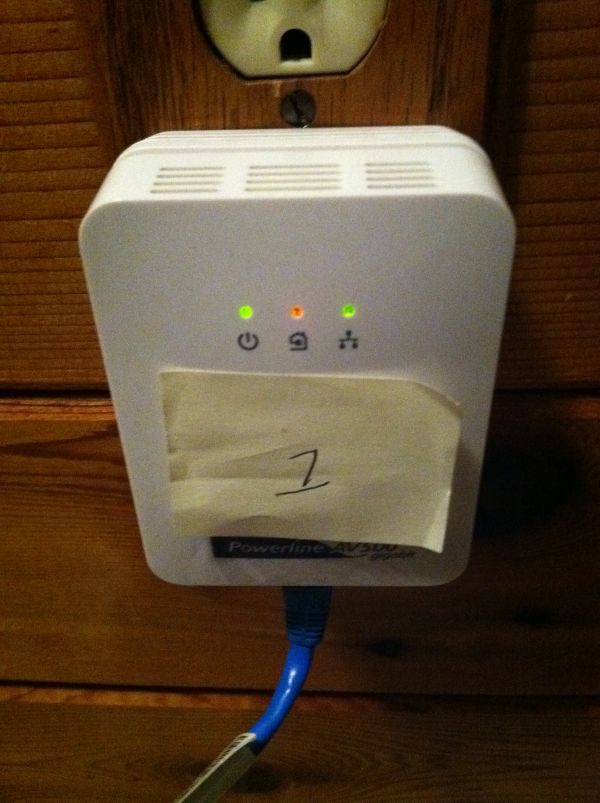
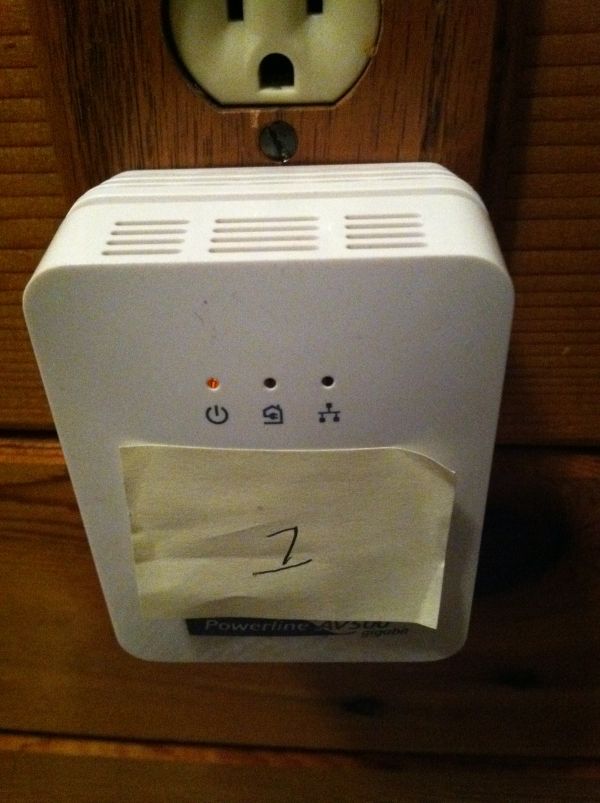
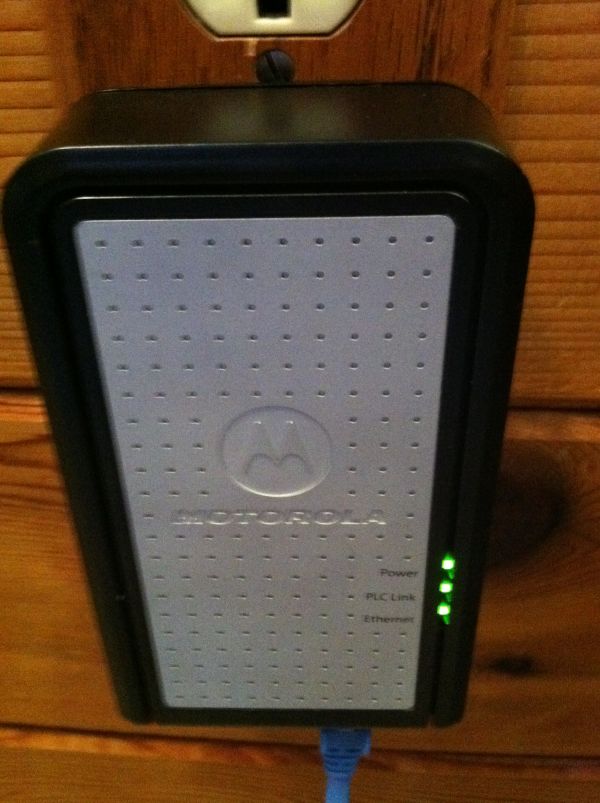
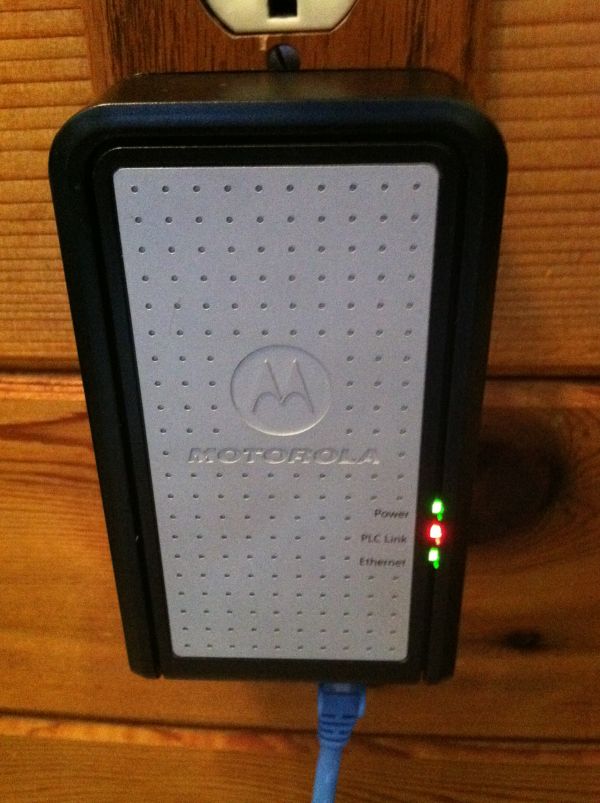








53 Comments
View All Comments
quiksilvr - Thursday, September 1, 2011 - link
Have you tried getting a better router and/or perhaps a better wireless card for your laptop?akedia - Thursday, September 1, 2011 - link
I have a current generation Airport Extreme, which is generally regarded as one of the best wireless routers available, and the built-in WiFi antenna in my Mac mini is not upgradable, as far as I know. My roommate's laptop is an HP dm1z, also not upgradable, and my Droid X is stuck with the antenna it shipped with as well. It's not my hardware, it's my environment. WiFi has limitations, like it or not.bdipert - Thursday, September 1, 2011 - link
Different tools for different tasks, jigglywiggly. Powerline can make a pretty good 'backbone' technology if, as I state in the article, you want to 'dispense with burrowing through dirty, spider- and snake-infested crawlspaces and drilling holes in walls and floors in order to route Cat5e cable around'. Wi-Fi conversely can be effective across intra-room and few-room spans...and with mobile devices.Paedric - Thursday, September 1, 2011 - link
Thanks for the article first, that's something I've been interested in for quite some time.However, I have a question; you tested it in a "perfect" environment by disabling interfering devices, to test the potential of the system, but what happen if it is not the case?
Is the performance hit really noticeable?
I don't want to rout a cable across the whole house, but I'm not really keen on turning off the fridge, lights, and unplugging devices every time I want to connect to the internet.
Denithor - Thursday, September 1, 2011 - link
I have the TRENDnet TPL-303E2K Powerline AV Adapter Kit installed in my home, connecting my wireless router in the living room to my office computer about 50 or 60 feet away. Couldn't get a solid enough wireless signal in the office for any kind of gaming, hooked up this kit and within literally 2 minutes was playing everything just fine.There's no need to unplug or turn off anything. It just works...
gariig - Thursday, September 1, 2011 - link
I bought my parents the same TRENDnet that Denithor has (crazy coincidence) because their wireless router and extra computer are on the other side of a ~2000 SQ FT house. Works flawlessly for normal computer usage (e-mail, Youtube, etc) and printer sharing. I don't know how well it works for large file transfers but I'd imagine you'll at least get 100 mbpsbdipert - Thursday, September 1, 2011 - link
It depends. That's the only meaningful answer I can offer. That's why, after much gnashing of teeth and back-and-forth waffling, I decided to do my testing with everything turned off and disconnected. Otherwise, if (say) I had an especially noisy refrigerator motor, my results might have unfairly undershot some alternative typical-refrigerator reality. Obviously, my data wasn't the absolute best case...as I mentioned, I stuck with DHCP address assignments for the two Endpoints, instead of hard-wiring static IP addresses, and I concurrently ran all available powerline networking adapters although only three were in active use at any point in time, and I chose outlets out of functional meaningfulness to me, intentionally ignoring whether or not they spanned multiple breakers, or jumped across phases, in the process. But I also don't think it would have been right to turn on all potential interference sources, then do the tests.With that said, I regularly sling ~20 Mbps Windows Media Center streams (HD ATSC recordings) around my LAN, including through powerline spans, with no problem.
leexgx - Thursday, September 1, 2011 - link
just would of been nice if you had done an short test with stuff on to see how it is handled them (just 1 page short tests) as you did it with every thing offyou could of had an laptop with you to monitor each power plug speeds when stuff came on, last power plugs I used the speeds stated seem close to bandwidth useable (-50 ish % for overhead)
I found power plugs to be very reliable and how they handle packet loss as well most of the time (last time I played with them)
Joe Martin - Thursday, September 1, 2011 - link
Does it work for streaming video or not? Very hard to read article.bdipert - Thursday, September 1, 2011 - link
It's impossible for me to provide a simple answer to such a question without either undershooting or overshooting the spectrum of possible realities. First off, there's the bandwidth potential of any two powerline nodes in YOUR particular setup to consider...only you can measure and ascertain that. Then you've gotta determine what you mean by 'streaming video'...are we talking about a 20 Mbps encapsulated MPEG-2 (ATSC) HD stream coming from a Windows Media Center server, for example, or a heavily compressed sub-1 Mbps H.264 standard-definition video stream? Protocol? Etc...